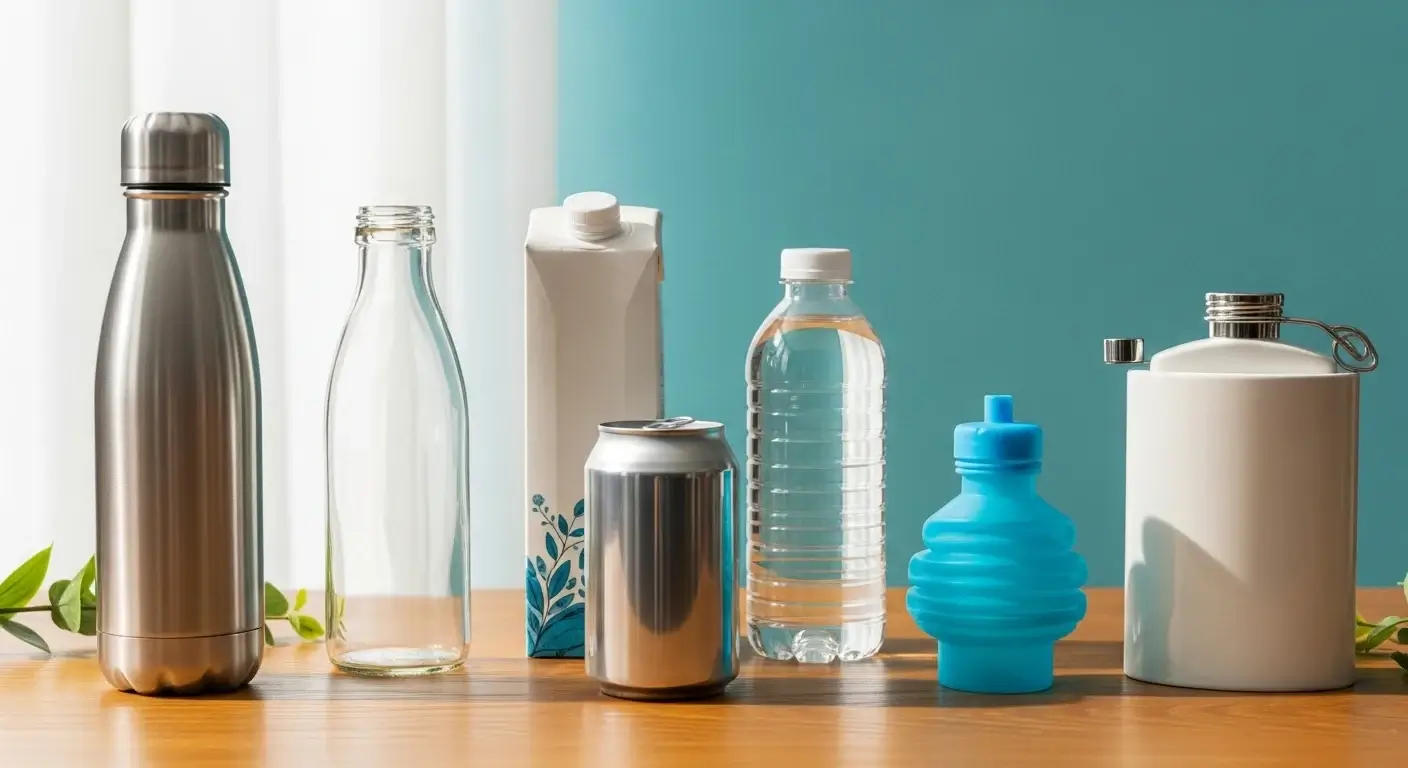
Plastic bottles pollute land and oceans. Switching to better options is easier than you think.
Stainless steel, glass, boxed water, aluminum cans, and plant-based bioplastics are the best substitutes for plastic bottles.
Let’s break down the top alternatives, their benefits, and which one fits your lifestyle best.
What Are the Most Eco-Friendly Alternatives to Plastic Bottles?
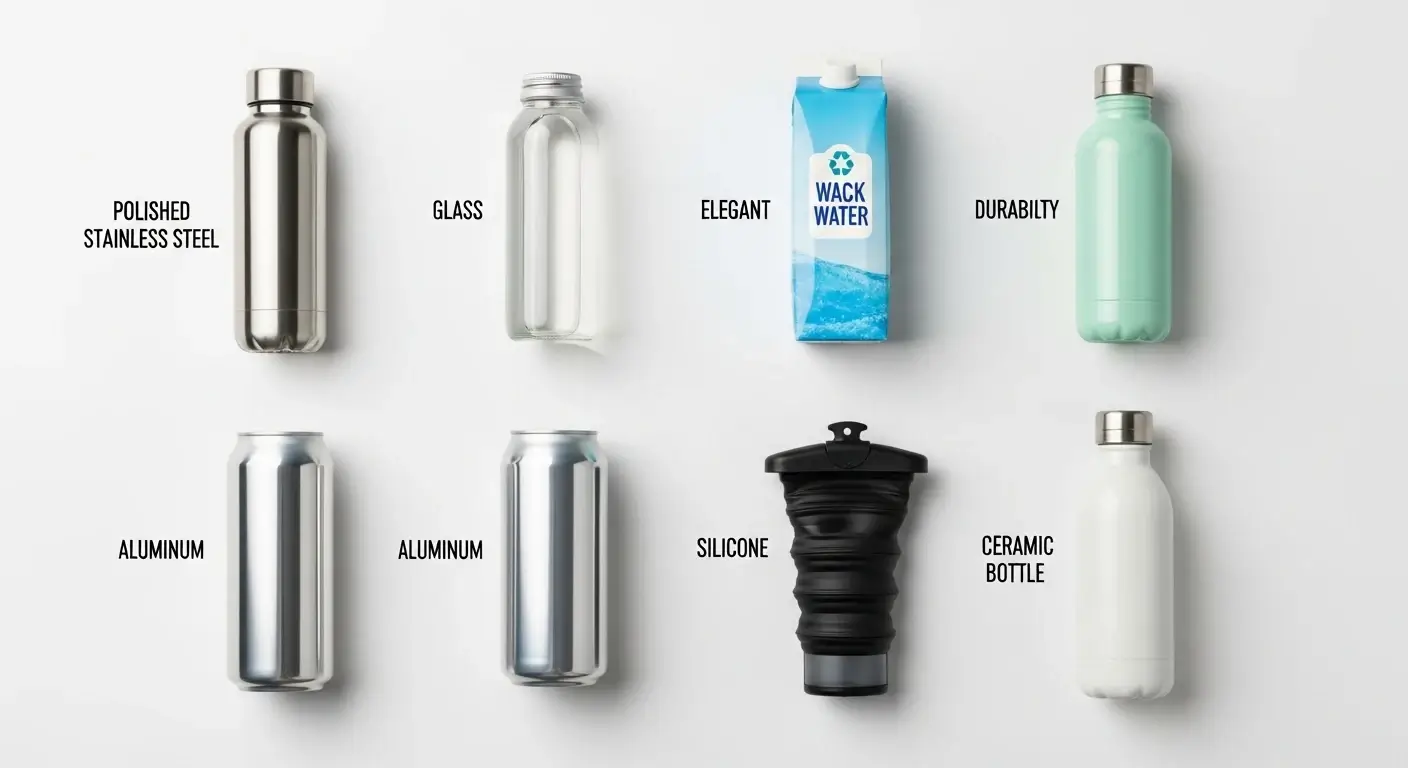
I stopped buying plastic bottles last year. Now I use steel, glass, or boxed water depending on the day.
Stainless steel, glass, plant-based bottles, boxed water, aluminum, silicone, and ceramic are top eco-friendly alternatives1.
Comparison Table
| Alternative Type | Recyclability | Durability | Best Use |
|---|---|---|---|
| Stainless Steel | Highly recyclable | Very durable | Everyday reusable use |
| Glass | Infinitely recyclable | Fragile | Office, home |
| Boxed Water | Fully recyclable | Short lifespan | Single-use, on-the-go |
| Aluminum Cans | Infinitely recyclable | Single-use | Events, travel |
| Plant-Based Bottles | Recyclable | Moderate | Light-duty, short-term use |
| Silicone Bottles | Recyclable (some areas) | Durable | Travel, foldable, gym |
| Ceramic Bottles | Recyclable | Durable but heavy | Specialty bottles, home use |
Each one solves a different problem depending on when and how you use it.
How Do Stainless Steel Bottles Compare as a Plastic Substitute?
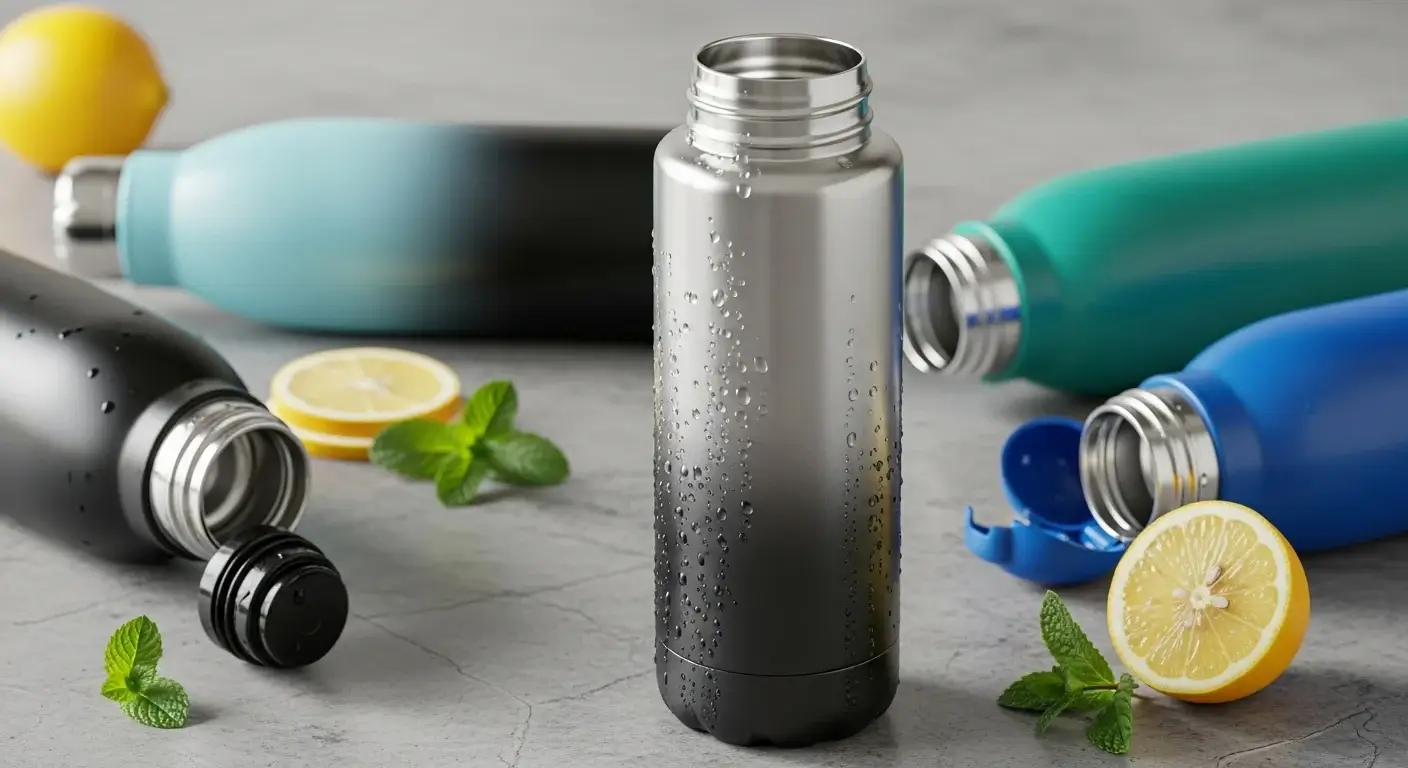
I carry my insulated stainless steel bottle every day. It’s durable and keeps drinks cold for hours.
Stainless steel bottles are durable, safe, and recyclable2—ideal for daily use and long-term sustainability.
Benefits
- Rust-resistant and toxin-free
- Keeps water hot or cold for hours
- Doesn’t leach chemicals or taste
- Can last for years with proper care
It’s the most practical long-term choice for daily hydration.
Are Glass Bottles a Practical and Sustainable Alternative?
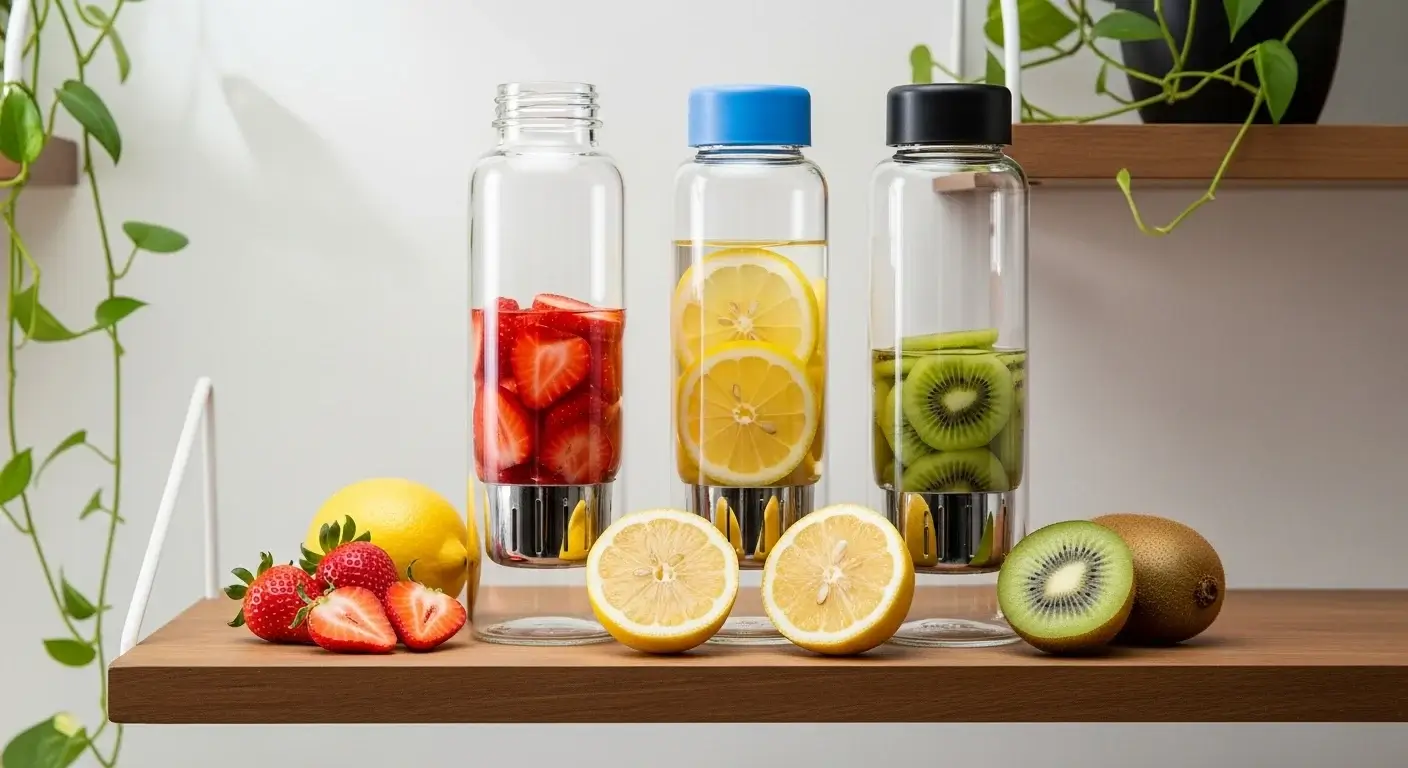
At home, I drink from glass—it tastes better and feels cleaner.
Glass bottles preserve flavor, are 100% recyclable3, and free from chemicals—but they’re heavier and breakable.
When Glass Works Best
- At your desk or kitchen
- For drinks where taste matters (e.g., juice or tea)
- In low-risk, non-mobile environments
They’re stylish and safe—just not for hiking or biking.
What Are Plant-Based and Biodegradable Bottle Options?
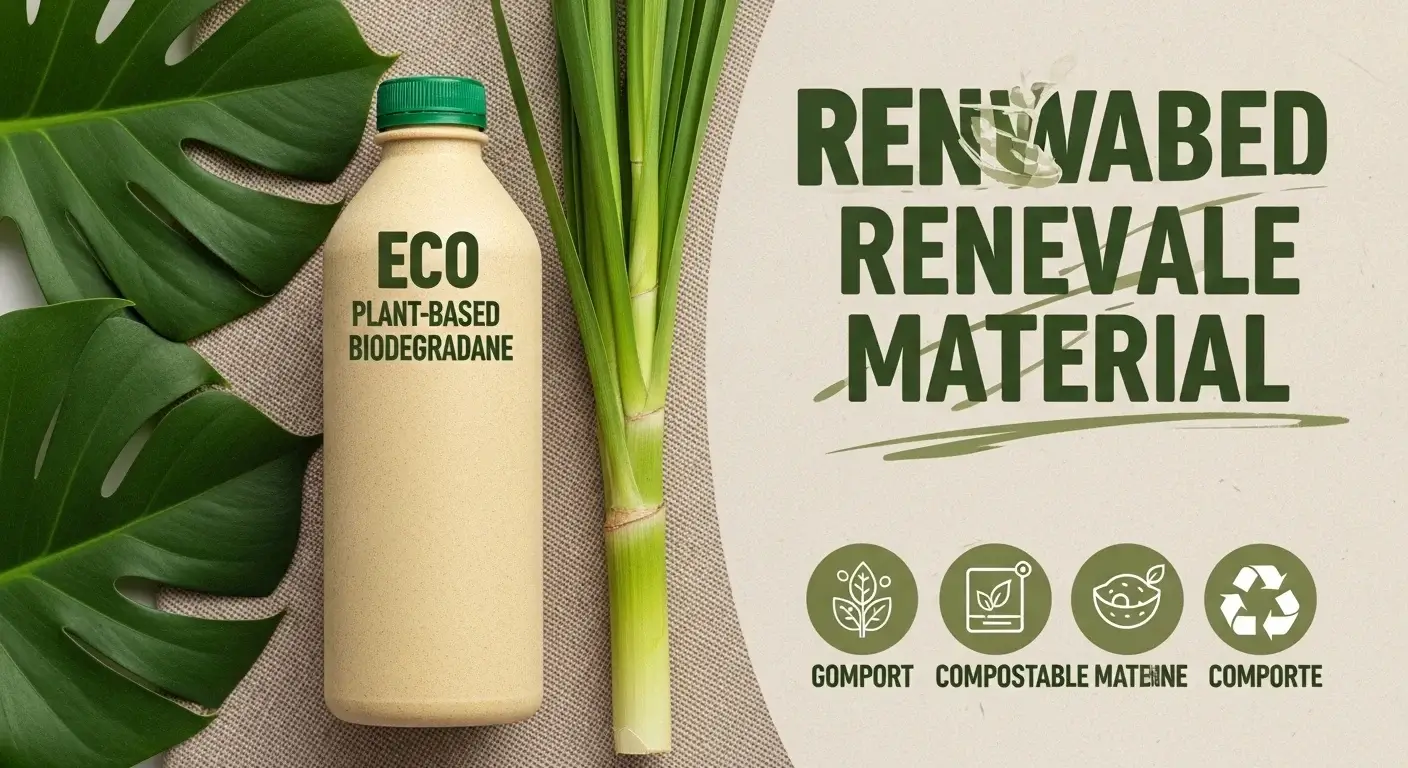
I tried a sugarcane bottle once. It looked like plastic but felt cleaner and lighter.
Plant-based bottles4, like those made from PHA or sugarcane, are biodegradable and BPA-free.
Features
- Made from renewable crops like corn or sugarcane
- Fully recyclable or compostable (PHA-based types)
- Suitable for short-term use and low-impact environments
These are growing in popularity for their low carbon footprint and renewability.
How Does Boxed Water Serve as a Plastic Bottle Replacement?
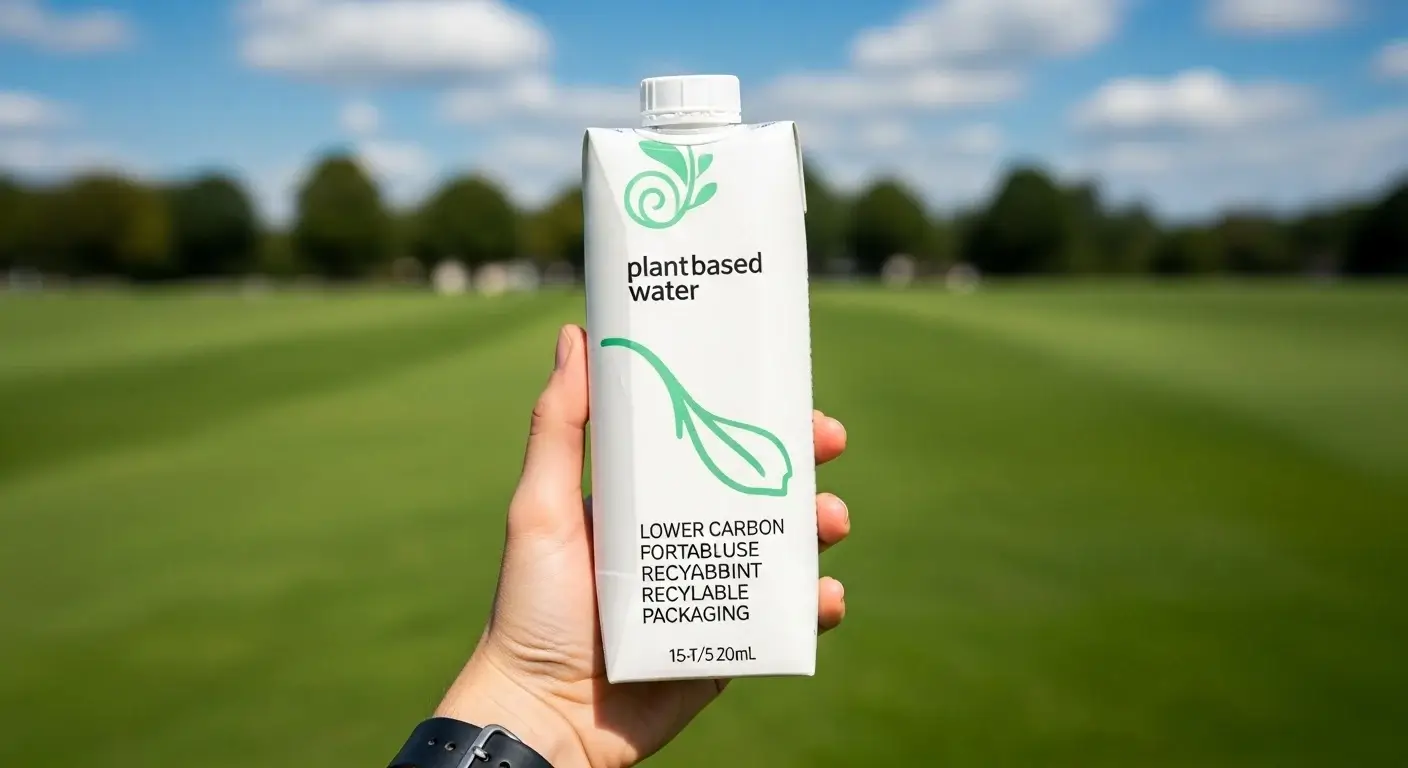
Boxed water was my festival go-to—light, recyclable, and no plastic cap.
Boxed water bottles use plant-based cartons5 that reduce carbon emissions and are fully recyclable.
Highlights
- 36% lower carbon footprint than PET bottles
- Lightweight and portable
- Recyclable in most curbside programs
Great for occasional use and better than plastic—but still single-use.
Can Aluminum or Canned Water Be an Eco-Friendly Substitute?
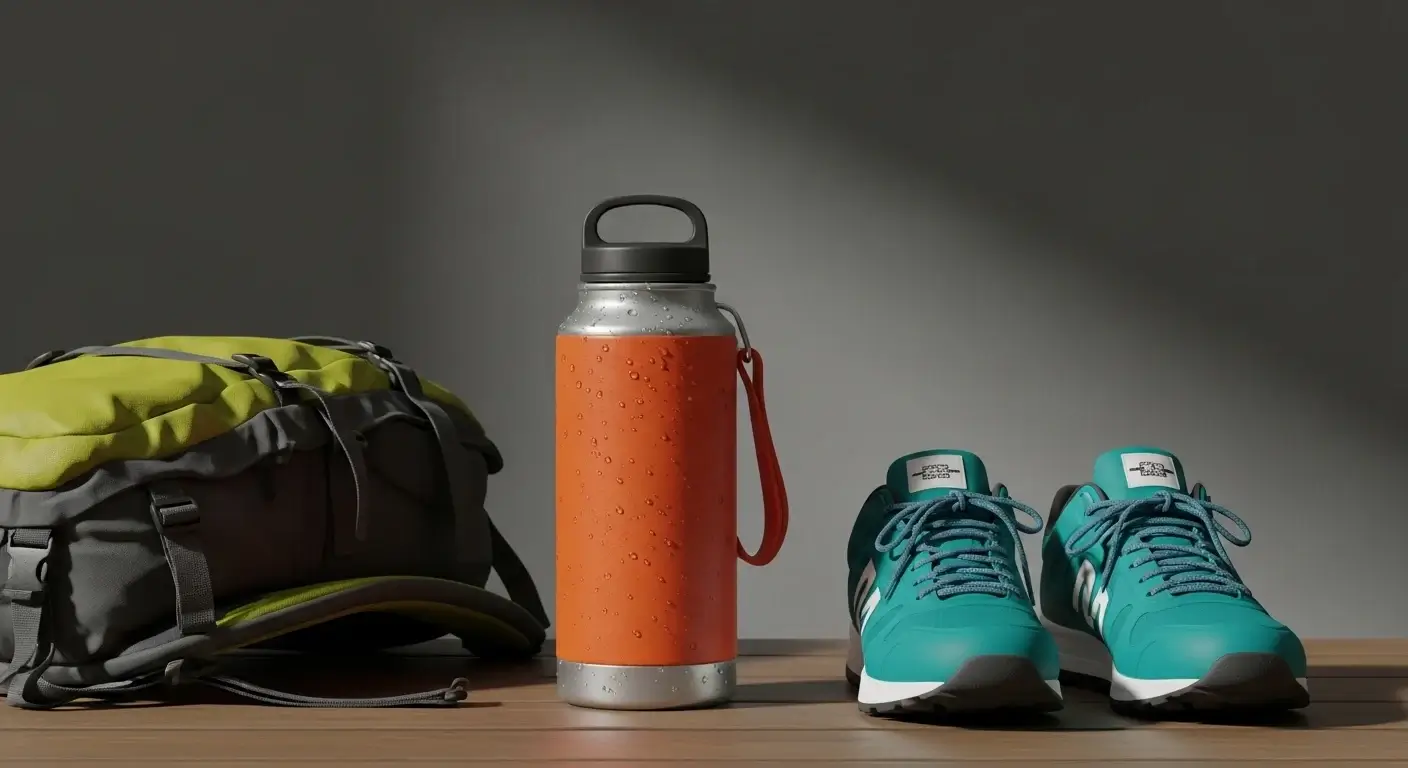
Canned water surprised me—cool, convenient, and super recyclable.
Aluminum water bottles and cans are recyclable, lightweight, and widely accepted6 in recycling systems.
Key Facts
- Recycled more often than plastic
- Maintains water taste well
- Best for events or one-time use
For those times when you need convenience but want to ditch plastic.
What Are the Pros and Cons of Silicone and Ceramic Bottles?
![]()
My silicone bottle folds up in my bag—it’s a lifesaver on trips.
Silicone bottles7 are flexible, BPA-free, and travel-friendly; ceramic bottles are elegant and eco-safe but heavier.
Pros & Cons Breakdown
| Type | Pros | Cons |
|---|---|---|
| Silicone | Foldable, lightweight, safe | Not widely recyclable |
| Ceramic | Stylish, inert, long-lasting | Breakable, heavy |
Use silicone when you need compact, reusable options. Choose ceramic for specialty or indoor use.
How Do Reusable Bottles Reduce Plastic Waste Effectively?
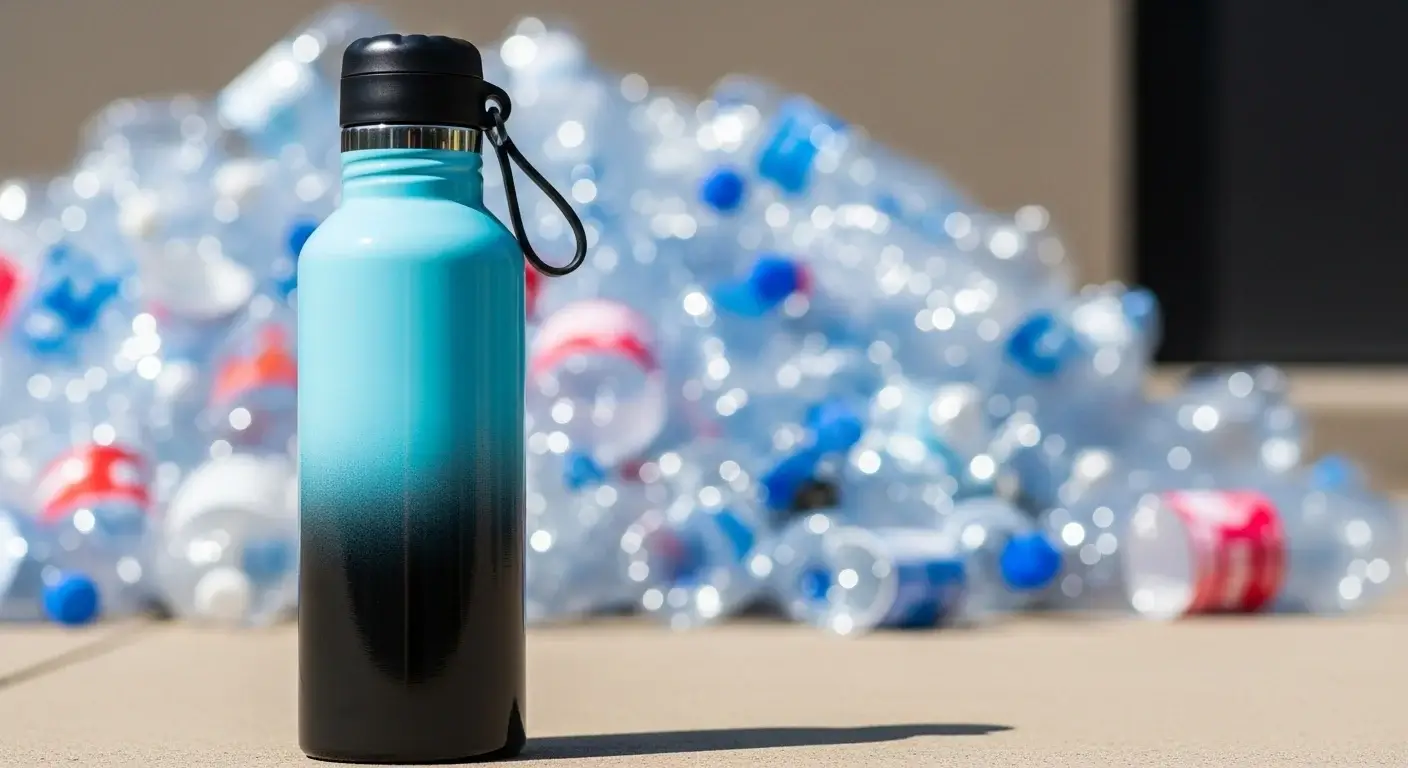
I used to toss a bottle a day. Now I refill once—and save money too.
A single reusable bottle can replace hundreds of disposable plastic bottles8 each year.
Environmental Benefits
- Lowers landfill and ocean pollution
- Cuts demand for fossil-fuel-based plastic
- Reduces transportation and production emissions
Every refill is one less bottle in the trash.
What Should Consumers Consider When Choosing a Plastic Bottle Alternative?
![]()
I asked myself: Do I need insulation? Durability? Lightness? That guided my pick.
Consider use case, durability, taste, weight, recyclability, and cost9 when picking your plastic bottle substitute.
Questions to Ask
- Will I reuse this daily or occasionally?
- Do I need insulation for hot/cold drinks?
- Is this bottle recyclable at end-of-life?
- Does it fit in my bag or cup holder?
The right bottle makes it easier to stick with your new eco habit.
How Do New Innovations Like PHA Bioplastics Change the Market?
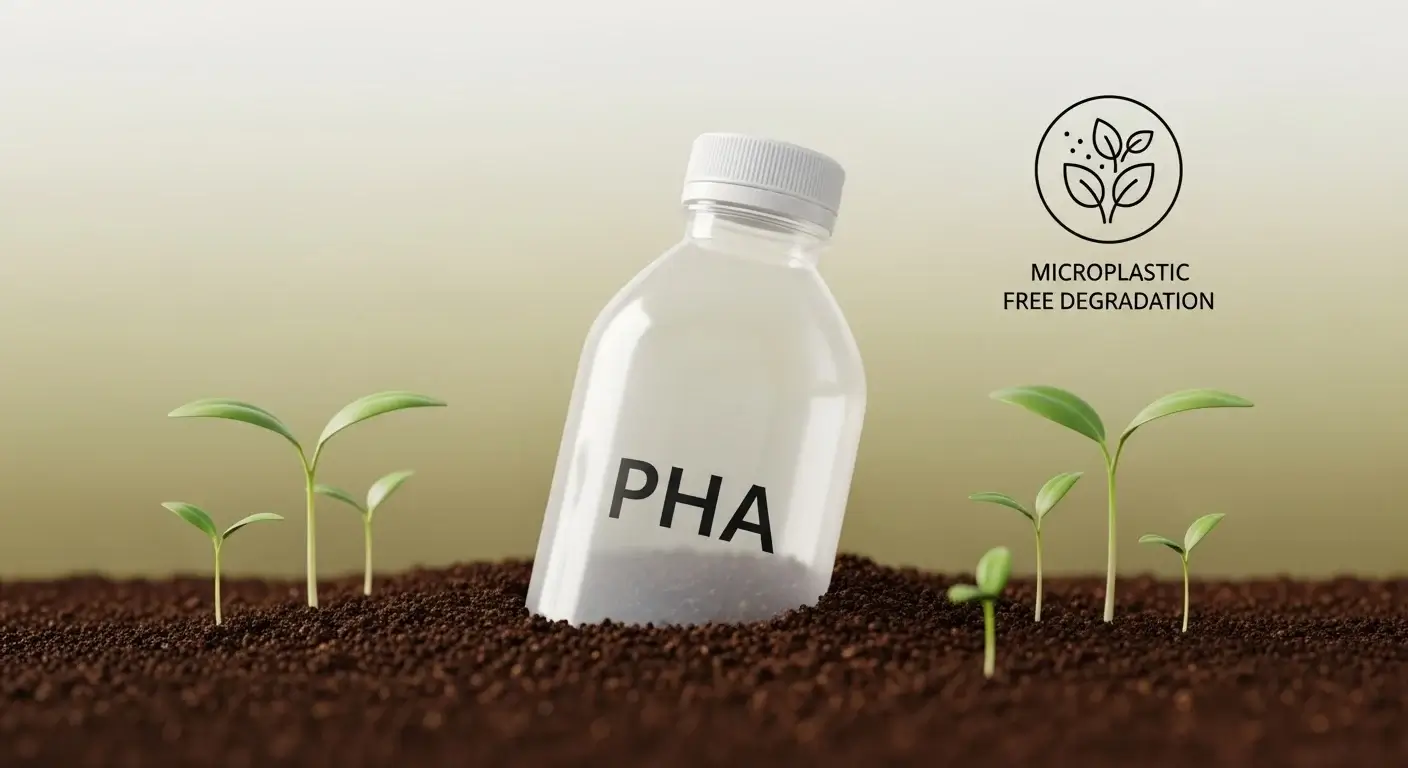
PHA bottles break down without harming nature—a big leap forward.
PHA bioplastics10 are compostable and made from natural sources, offering a true plastic-free solution.
Why PHA Matters
- Decomposes in soil or marine environments
- Doesn’t produce microplastics
- Made from renewable sources like corn or oils
They’re still new, but they point toward a truly sustainable bottle future.
Conclusion
The best substitute for plastic bottles depends on your needs—but stainless steel, glass, boxed, and plant-based options all offer safer, greener solutions.
FAQs
What’s the best reusable bottle for everyday use?
Stainless steel—it’s durable, insulated, and safe.
Is boxed water better than plastic?
Yes, it has a lower carbon footprint and is fully recyclable.
Are PHA bottles really compostable?
Yes—under the right conditions, they break down without leaving toxic residues.
Is it worth spending more on a glass or steel bottle?
Yes, over time you save money and reduce your environmental impact.
Which bottle material keeps water tasting the best?
Glass and stainless steel preserve taste better than plastic or silicone.
Footnotes:
-
Compares multiple plastic bottle alternatives based on recyclability, use case, and environmental benefit ↩
-
Explains the advantages of stainless steel for durability, safety, and eco impact ↩
-
Describes glass as a non-toxic, recyclable option ideal for taste preservation ↩
-
Highlights how plant-based bottles offer renewable, compostable solutions to plastic ↩
-
Reviews how boxed water cartons are made and why they’re better for the environment ↩
-
Shows why aluminum cans are more frequently recycled and eco-preferred over plastic ↩
-
Explains the flexibility, safety, and travel benefits of silicone bottles ↩
-
Quantifies how reusable bottles dramatically cut plastic waste over time ↩
-
Guides readers on key factors for choosing a sustainable bottle for personal use ↩
-
Details how PHA bioplastics decompose and help eliminate microplastic pollution ↩

